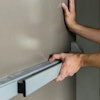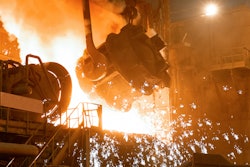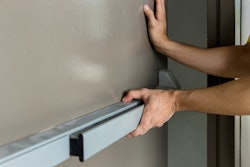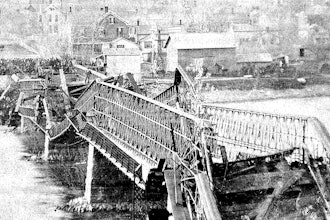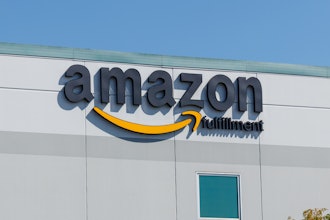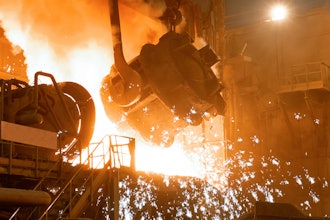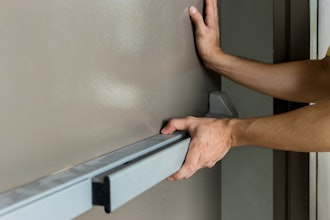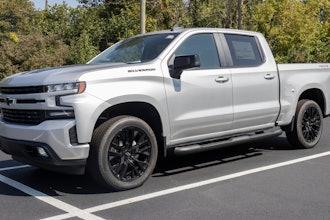
Manufacturers, 3PLs, warehouses, distribution centers and virtually every facility connected to the global supply chain is being tested by the new realities of COVID-19. Not only are economic disruptions and “essential worker” restrictions creating a challenge to maintaining regular operations and cashflow, but they are faced with a host of employee health and safety issues never experienced before.
Even compliance with existing OSHA standards is now more difficult. Adequately protecting employees from exposure and infection likely falls under the General Duty Clause, Section 5(a)(1) of the Occupational Safety and Health (OSH) Act of 1970, 29 USC 654(a)(1). That clause requires employers to furnish to each worker “employment and a place of employment, which are free from recognized hazards that are causing or are likely to cause death or serious physical harm.” (See: www.osha.gov/laws-regs/oshact/completeoshact.) Many facilities that were previously in compliance may not be any longer, particularly given COVID-related social distancing guidelines.
Here are four ways facility managers can modify their operation design to follow these Centers for Disease Control and Prevention (CDC) guidelines and other disease-control practices.
- Maintain separation of transport drivers and material transfer personnel
- Reduce infiltration of external contaminants
- Provide interior separation at work stations, break rooms, etc.
- Deploy better operational oversight, surveillance systems and processes
These solutions address the need for social distancing in environments that allow it, as well as in situations where operational logistics prevent employees from working at a CDC-recommended distance. Let’s take a closer look at some of these approaches for providing employees safer environments without sacrificing productivity or jeopardizing product quality.
Environmental control and separation at the loading dock
For decades, truck drivers have been opening the swing doors of their trailer in the drive approach before backing up to a loading dock. In today’s new world, exposing the trailer’s contents to the external environment like this seems unsafe and opens up the possibility of contamination, whether intentional or unintentional.
Fortunately, new loading dock equipment has been specifically designed to address this situation. Commonly referred to as a “drive-through” dock design, this approach incorporates a vertical storing loading dock leveler, along with a special dock shelter, vehicle restraint and integrated dock controls. At facilities with drive-through dock, trailer doors can be opened into the plant, once the truck has finished backing up and is restrained to the dock. This eliminates the opportunity for outside contaminants to come in contact with the cargo, putting the company in the driver’s seat when it comes to safeguarding product and employees. Facilities with open or pavilion docks may install permanent or sliding partitions, enclosing the loading dock area with curtain enclosures.
Drive-through dock design has already become widely accepted across the food industry and is quickly gaining popularity in other sectors. Today’s heightened concerns about cleanliness and contamination prevention are only hastening the growth of this design trend.
While the loading dock is the first line of defense against bringing in contaminants, there are options to consider inside the facility, as well.
Environmental control and separation inside the plant or warehouse
Physical barriers, whether in the form of personal protective equipment (PPE) or sneeze guards, are in high demand. Many manufacturing environments present different and bigger challenges than typical sneeze guards can handle. However, some products once thought of as a way to segment work processes or keep people away from machines can also be a solution for employee separation during the work day.
Industrial curtain walls are a flexible and customizable way to separate work spaces, help control air particulate, and create external visitor entry points. Integrating high-speed doors with curtain walls for controlled access to these areas will provide even more benefits through distancing.
Safety barriers have long been the standard for separating and protecting people from material handling equipment and production areas. While that remains true, barriers can also be used to create work spaces, break areas or any other space that requires maintaining distances between people. At the loading dock and inside the plant, separation means protection. Installing warehouse guard rails provides a true physical barrier, and they are available in a variety of materials and accessibility options.
Employee separation barriers
In recent months, facility and safety managers have turned to plastic separation barriers specifically designed for situations where employees cannot distance at least 6 feet apart. These dividing barriers can help stop close-proximity spread of airborne particulate among co-workers on a plant floor. They are often a best solution for production lines, assembly cells, and other condensed settings.
Portable barriers are free-standing workstation partitions that can be easily transported to the locations within a facility that need them. The separation panel of these floor units are made from clear PVC attached to a solid base. The sturdiest units have a 1” welded steel tube base for stability. When choosing a type of plastic barrier, look for ones that are simple to set up and have panels that can be wiped down for easy sanitation.
Additionally, panels that have the flexibility to allow for different configurations are desirable. Separation panels that can come as a single panel, two-panel “L-shape,” three-panel “U-shape,” and four-panel enclosure configuration can cover any kind of application. These configurations are possible when panels are able to interlock at a 90-degree angle or linearly.
Implementing these physical tools can be an excellent way to foster proper distancing efforts in the short term for a facility while providing additional safety measures going forward. Yet, there are even more advanced ways to incorporate existing equipment into long-term solutions to minimize close interactions and promote productivity.
Utilize existing smart equipment with IIoT Automation and smart technology is a huge part of the future for most industrial facilities. In particular, facilities that have invested in Industrial Internet of Things (IIoT) technology are realizing a strong return on their investment. At the loading dock, productivity can be improved without the hassle of two-way radios, multiple spreadsheets and logbooks.
For most companies, however, converting from a low- to high-tech dock operation is not an overnight transformation, as few can afford across-the-board replacements of their materials handling equipment assets.
Fortunately, “upgradeable” dock equipment – including vehicle restraints, levelers and controls – is now available. These pieces of equipment can be installed with baseline levels of connectivity and then upgraded to more robust IIoT-compatibility at a later time.
Such equipment enhances safety in the yard and loading dock by allowing for real-time communication and interlocking smart equipment. From a longer-term perspective, smart dock systems can help decision makers to analyze trends, correlate them with historical data, identify opportunities and, ultimately, implement continuous improvement and behavior modification programs. These data-informed initiatives can also enhance energy efficiency, work flow, process and maintenance programs, as well as safety – all of which impact an organization’s bottom line. In today's changing landscape for logistics warehouse operations, the ability to evolve is more important than ever. Now is the time to recognize the positive impact that dock and yard management software can have on logistics operations and invest in this cutting-edge technology.
Combatting COVID-19 the right way
Significant portions of America’s existing logistics and manufacturing facilities will need to be reimagined because of the pandemic. According to a recent survey by the National Association of Manufacturers, 53% of manufacturers anticipate a change in operations due to COVID-19. While these issues are most prevalent in industries such as food and pharmaceuticals, it is relevant to virtually all. Companies need to pay particular attention to the material transfer zone and provide for greater separation and segmentation, as well as enhanced hygiene and cleanliness requirements.
Employees want to work, make a living and support their families. But they also want to be safe at their jobs – and COVID-19 has presented a new challenge to that. Fortunately, these new approaches to facility layout and design are helping companies address this problem and rise to that challenge.
The information herein is provided as a general reference regarding the use of the applicable product(s) in specific applications. This information is provided without warranty. It is your responsibility to ensure that you are using all mentioned products properly in your specific application and in accordance with all laws and regulations.
Having spent the past 20-plus years specializing in temperature control, related to refrigerated warehousing and food/pharmaceutical grade manufacturing and distribution centers, Matt Fleckenstein is a cold storage industry specialist at Rite-Hite. He is consistently recognized as a trusted resource to identify temperature control solutions to reduce operational costs while increasing product quality, productivity and employee safety. He specializes in protecting the complete cold chain and assisting companies with effective food defense strategies.



